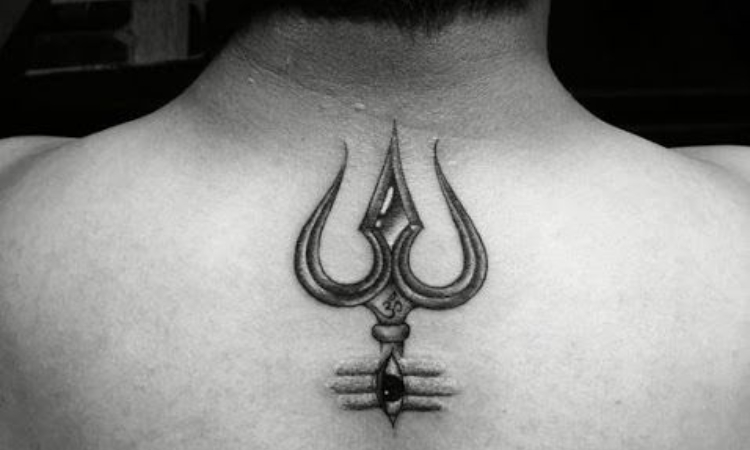In India, where spiritual symbolism runs deep, Lord Shiva tattoos have evolved from traditional religious motifs into stunning pieces of self-expression. Be it a detailed portrait of Mahadev in meditation or a subtle Trishul design, Shiva-inspired tattoos carry meaning that resonates with both men and women. And when you are seeking the ideal Lord Shiva tattoo artist in Delhi, you will find some of the best hands who will be willing to make this divine vision come true.
But why are Lord Shiva tattoos becoming such a powerful trend today? Let’s take a closer look.
A Symbol of Power, Calm, and Devotion
Lord Shiva is a symbol of transformation, destruction of ego, and a new way of life. His image holds layers of meaning; every detail of the third eye up to the crescent moon has its story. People choose Shiva tattoos not just because of religious motivation, but because of what he symbolizes: chaos and peace, control over desire, and boldness to start again.
For men, Shiva tattoos can be associated with strength, determination, and fearlessness. For women, they can symbolize spirituality, inner calm, and self-reliance.
Here’s what makes Shiva tattoos so special to people:
- Personal Belief: They reflect one’s faith and inner strength.
- Cultural Identity: A way to honor Indian roots and spirituality.
- Artistic Appeal: The mix of symmetry, sacred geometry, and realism looks visually striking.
Trending Lord Shiva Tattoo Designs
Shiva tattoos come in many styles, some intricate, some minimalist. Artists across India are also trying to blend mythology and modern art, putting a modern twist on traditional symbols.
1. Meditating Shiva
One of the most desired designs is a peaceful Shiva in meditation with a cosmic or mountain backdrop. It symbolizes separation, discipline, and balance, ideal when one is more interested in stability over chaos.
2. Tandav Pose (Cosmic Dance)
This powerful design captures Shiva’s dance of destruction and creation. It is energetic, vibrant, and suitable for individuals ready to take risks.
3. Trishul and Damru Combination
This design is a minimalist but symbolic choice, combining Shiva’s trident and drum. The Trishul is a symbol of power, and the Damru is the beat of life, the sound of creation.
4. Half Face Shiva (Ardhanarishvara)
Bringing together the masculine (Shiva) and feminine (Parvati) power, the tattoo symbolizes harmony and equality. It’s a lovely idea that both men and women can associate with.
5. Third Eye Symbol (Trinetra)
A small but meaningful tattoo showing Shiva’s third eye, symbolizing insight and destruction of evil.
6. Om Namah Shivaya Script
This holy mantra translates to “I bow to Lord Shiva. The script, often inked in Sanskrit, makes for an elegant forearm or spine tattoo.
Placement Ideas That Make an Impact
Choosing the right placement adds depth to your tattoo’s meaning. Here are some popular options:
- Men: Upper arm, chest, back, or forearm for larger, detailed designs.
- Women: Shoulder blade, ankle, wrist, or upper back for smaller, elegant designs.
- Unisex: Spine, ribs, or thigh for intricate artwork with a balanced look.
Pro tip: Discuss placement with your artist to ensure the tattoo flows well with your body’s natural shape and movement.
Tattoo Styles That Are Catching On
Modern tattoo art in India is seeing a blend of realism, blackwork, and geometric patterns with mythological subjects. Some trending styles include:
- Black and Grey Realism: Focuses on fine details and shading to bring Shiva’s expression to life.
- Watercolour Tattoos: Adds vibrant blues and purples to mimic cosmic energy.
- Line Work and Dot Work: Minimalist yet artistic, these tattoos rely on precision.
- Abstract Fusion: Combines traditional Shiva symbols with modern visual elements for a unique twist.
The Rise of Devotional Tattoos in India
In recent years, Devotional tattoos have become a meaningful way for people to express their faith beyond prayer and temple visits. Lord Shiva tattoos, in particular, have taken centre stage in this movement.
They serve as constant reminders of values like humility, courage, and detachment from materialism. For many, it’s less about religion and more about personal spirituality, a quiet way of carrying divinity within.
Aftercare and Longevity
A tattoo, especially one with fine detailing, needs proper care:
- Avoid direct sunlight for at least two weeks.
- Keep it clean and moisturized.
- Don’t scratch or peel the skin while it heals.
- Revisit your artist for touch-ups after a few months if required.
Taking care of your tattoo ensures that Shiva’s image or symbol remains as vibrant and defined as the day you got it.
Conclusion
From minimalist Trishul designs to full-back meditating Shiva portraits, each tells a story that’s deeply personal yet universally spiritual.
Whether you see it as devotion, motivation, or pure art, a well-crafted Shiva tattoo bridges the ancient with the modern. So, if Mahadev calls to you, find an artist who can translate that energy onto your skin with reverence and skill.
FAQs
1. Are Lord Shiva tattoos only for religious people?
Not necessarily. Many people get them for their spiritual symbolism or personal connection to Shiva’s values.
2. Which part of the body is best for a Shiva tattoo?
It depends on your design. Larger tattoos fit well on the chest or back, while smaller symbols work great on the wrist, neck, or forearm.
3. Do Lord Shiva tattoos have specific rules or taboos?
There’s no strict rule, but it’s respectful to avoid placing sacred symbols below the waist.
